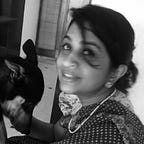Masking as a way of life
Most people today fall into either of two categories- they are either, what I call, COVID-deniers or are resigned to circumstances while waiting for the vaccine.
The COVID deniers have convinced themselves that because lockdown restrictions have been removed, things are back to normal. They are the ones who will correct you if you mention COVID, and say, “COVID is over. Now we are in post COVID and we have work to do.” These people might sport a mask, but will pull it down to talk to you. They have probably been exposed to the virus a couple of times, but since they tested negative, they feel they are immune to the virus. They are the ones actively pushing for physical meetings, and want to make up for lost time by going out as much as possible. They talk about the vaccine and the new normal, but for all practical purposes they are back in pre-Lockdown days.
The second category is resigned to circumstances and is actively waiting for a vaccine to reach them so they can resume their daily life. These people are almost paranoid about the virus getting closer to them physically, and everytime someone in their apartment complex tests positive, their anxiety levels go up. While some of them are forced to get out of the house, they do so with trepidation, and return to the safety of their homes as soon as possible. For them, any semblance of a normal life will resume only after they are vaccinated, and they are literally counting down to that day.
What both these sets of people miss is the fact that while things are far from what we consider “normal” today, it will take a very long time before any semblance of “normalcy” is established. Even if the Phase 3 trials are successful, is unlikely that a vaccine will be available before Summer of 2021.
We do not have enough peer reviewed data on percentage of population that has been exposed to the virus and developed some measure of immunity. More importantly, not enough is known about how long the immunity developed due to exposure to the virus will last, or about the severity of reinfection, to make any predictions on herd immunity.
Since we cannot put our lives on hold for another two to three quarters, we have to get used to the idea of a ‘New Normal’. We need to start looking at how we can resume essential activities, with sufficient precautions to reduce the chances of infection.
For companies it would mean identifying roles and activities that need you to be physically present at the workplace and ensuring appropriate physical distancing, sanitizing of surfaces, and adequate air circulation. Schools, especially for higher grades, would need to consider a hybrid model where theory classes are conducted online, and students come to school in batches for laboratory work. This would be the perfect time for retail establishments to shift to a partially online model, and enforce strict measures to reduce infection for the reduced footfalls.
The biggest change, however, will have to be in our attitude towards the virus. Instead of attempting to either avoid or ignore it, we need to accept that dodging the virus is going to be a reality for the foreseeable future.
At all points of time, we will need to be aware of the virus and how it spreads, so we can protect ourselves from it. This would mean we wash or sanitize our hands after touching any surface that may have been contaminated. We should at all times be aware of the fact that if we are carrying a viral load, it will infect the part of the mask covering our nostrils; we should not, therefore, touch the front of the mask, and if we do, we should promptly sanitize/ wash our hands.
The mask should always cover the nostrils and mouth whenever we are in proximity to another person. Pulling it down when we speak defeats the purpose of the mask because it is while singing, speaking, coughing or sneezing that a bigger viral load is discharged.
Leaning forward to hear the other person, or coming close to them so the words are more audible are two things we should avoid at all times. A minimum distance of 2–3 feet should be maintained at all times, unless absolutely unavoidable.
But the most important thing about the mask which we should understand is that even when used the way it should be used, it does not provide 100% protection against the virus. But what it does do is to considerably reduce the viral dose that the person is exposed to, which in turn reduces the severity of the symptoms.
So masking may not prevent you from getting the infection, but it will very likely ensure that you remain either asymptomatic or mildly symptomatic. This is borne out by recent research where a large number of asymptomatic cases are detected in places of universal masking.
This is increasingly leading to the hypothesis of causing “variolation” by exposing individuals to a smaller amount of viral particles in order to produce an immune response similar to that produced by a vaccine. Whether this hypothesis of a mask acting like a vaccine is proven or not, masking and distancing is critical in slowing down the spread of the SARS CoV2 virus.
By taking sensible precautions, we can ensure some semblance of a ‘New Normal’, which will help slow down the spread of the virus.’
This is particularly important because even after SARS CoV2 is tamed, there will be other viruses that have the potential to create a global pandemic. Unless all humanity learns to protect itself to slow down the spread, we may have to bring the world to a pause every few years. The countries which bore the brunt of the previous epidemics were affected much less this time. That will continue being the case.
